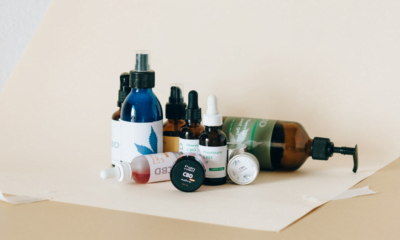The choice of CBD it, to a large extent, a personal preference, although there are several other factors that should also come into the equation.
Here, we look at the CBD varieties on offer and the background information you should consider before making a decision on which to choose
Decide whether CBD is for you
Make use of the many resources out there before taking CBD for the first time. Common reasons for wanting to try CBD are pain relief, helping anxiety, aiding sleep, and the treatment of conditions including epilepsy, PTSD and fibromyalgia.
Much is anecdotal evidence rather than medical-based, but the findings and personal accounts of people who have themselves benefitted can play a valuable role in guiding your choice about whether CBD might be for you, and in what form.
Research the different forms that are available
CBD is available in forms including oil, topical lotions, tinctures and edibles. Consider what you will be most comfortable in trying – for example, if smoking or vaping is not for you, there are other options to achieve the same effects.
Anecdotal evidence appears to point towards inhaling CBD as having the quickest results, but CBD drops under the tongue are also credited with having an effect within a few minutes of ingesting.
The effect of lotions and edibles tends to take a little longer to be felt, but users say they can be every bit as effective as other forms, depending on what condition it is being used to address.
Consider how much to use
CBD oil products, like those offered in dropper bottles or capsule form, come in a range of concentrations. The amount of CBD they contain should be found on the packaging – some list the amounts in mg, such as 250mg or 500mg. Other products may specify the concentration as percentages instead, such as 5%, 10%, or 20% cannabidiol.
For first-time users, the best advice is always to start small until you experience the effect, and doses can be modified from there. Many oils come in 1 milligram per drop concentration, so increasing dosage is straightforward. Edibles also come in standard doses.
Vaping is more difficult to measure dosage, so start with a small amount and increase if necessary and once the effects have been experienced.
Do you know where it comes from?
CBD oil is derived from cannabis or hemp plants, and while reputable producers source from plants which have been selectively bred, there are other manufacturers known to sell CBD which is non-food grade hemp grown under non-organic conditions.
This can lead to the presence of unknown and unwanted chemicals and pesticides in your CBD oil.
It is best to source CBD from manufacturers who are open about where their CBD is sourced from – most reputable ones do specify this information.
UK and European regulations are very strict and ensure the highest-quality products enter the market. A further quality test comes from the fact the products have been tested by professional third parties to ensure the safety and quality of the CBD.
Be clear on the extraction process
There are various ways in which CBD is extracted from the cannabis plant to create CBD oils, and not all these methods are created equal when it comes to the purity and quality of the final product.
Some companies that cut corners and produce cheap CBD products may use harmful solvents such as propane or butane to render their extracts.
Although these products are often less expensive, ask yourself if you really want to nullify the health benefits of the oil with products that contain remnants of harmful substances.
The CBD oils regarded as being of the best quality are usually created via stringent extraction using carbon dioxide under high pressure to isolate, preserve and maintain the purity of the CBD, although there are also other methods which are used without the involvement of toxic substances.
Manufacturers are generally transparent about their extraction processes and this information is commonly listed in the product description, or else any literature or packaging.
Ensure you can find out about the extraction process before you proceed, so you can be confident the CBD you are using is of the highest quality.
Full spectrum or isolate?
Ensure you know the difference between the full spectrum and isolate varieties of CBD. CBD isolate is the purest form of CBD, often containing upwards of 90% cannabidiol, with no presence of THC. Isolate is also both tasteless and odourless.
Full spectrum CBD contains a full range of cannabinoids, and is referred to as giving users the ‘entourage effect’ of the full spectrum of cannabinoids in the hemp plant.
Factors to note about full spectrum CBD are that it will contain fractional THC content, and can have a strong taste and aroma from the presence of terpenes and flavonoids.
Users report benefits from both strains of CBD, with neither being accepted as ‘better’ and instead dependent on individual experience and preference.
Factor in the cost
Research the options available and their cost. CBD should not be chosen on price alone, but it is advisable to look into what can be sustainable for you.
Once you have tried it and established its efficacy, look at cost per dose. While highly concentrated products may be a greater financial outlay, they may offer better value longer-term.
After you have found the right dosing level, see whether higher concentration may be a more sustainable option.

 News6 months ago
News6 months ago
 News6 months ago
News6 months ago
 Science5 months ago
Science5 months ago
 Industry6 months ago
Industry6 months ago
 News6 months ago
News6 months ago
 News5 months ago
News5 months ago
 Health4 months ago
Health4 months ago
 News5 months ago
News5 months ago
